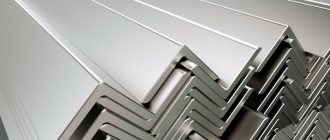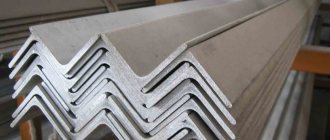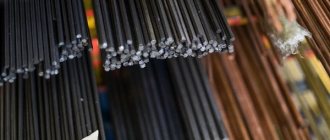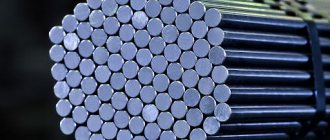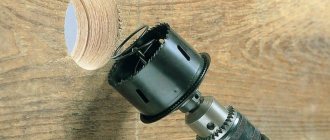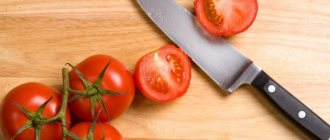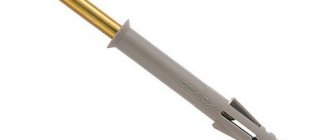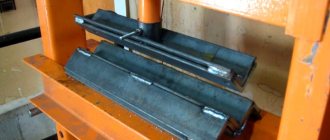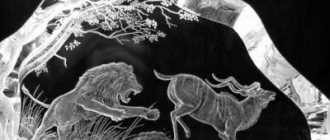Why are metal products called rolled metal?
The term rolled metal in the classification of metal products of metallurgical plants comes from the name of the machines on which they are manufactured. These are huge rolling mills that form metal products of a wide variety of profiles. It is the profile of the product that is the criterion for classifying rolled metal.
For the manufacture of metal products, carbon hot-rolled and low-alloy steel is used. These types of steels are characterized by a small amount of by-products and the addition of special elements that improve the properties of the steel (alloying).
The steel grades used for the production of rolled metal allow us to create products that are durable in all respects.
It is worth noting that carbon and low-alloy steels are often called structural or tool steels. These names make it clear what purposes they are intended for.
Non-ferrous metal products
This group is divided into certain subgroups.
- Parts made of aluminum and magnesium, which are considered lightweight.
- Lead, zinc and copper elements that are considered heavy.
- Products for the production of which rare metals are used. This is, for example, tungsten.
- Products from precious metals. These include gold, platinum and silver.
It is quite natural that non-ferrous rolled parts are used quite rarely. They are indispensable where special qualities are required. This may apply to equipment used by doctors in their work, various electrical devices, as well as equipment used in the field of aviation and space technology. Such parts are significantly inferior in terms of strength and durability to non-precious analogues. In addition, they are more expensive.
Long products
Commercial rolled metal, which is used in the construction of a house, can be clearly divided into shaped and long rolled products. In principle, this division is normalized and generally accepted for all sectors of the economy.
Shaped products have complex geometric shapes in cross-section without a closed perimeter contour. For example, I-beam, T-beam, rail, angle, beam.
The contour around the perimeter of the section of long products is simple geometric shapes: circle, square, rectangle, hexagon, etc.
By design, bars can be hollow (square pipe) or solid (reinforcement, rod, etc.)
Ferrous rolled metal
This product is the most popular. It is divided into three types.
- Various steel alloys.
- Three types of cast iron.
- Ferroalloys, which are used to create alloy steel.
Ferrous metal blanks are a kind of raw material that will later turn into piles, beams, rails, car frames, and so on. Naturally, they cost much less when compared with expensive color products.
Long products: types and use in construction
Let's look at the types of simple long products and their application.
Related article: Features of kitchen plumbing in a private house
Metal rod. These products have a circle in cross-section, less often an oval, with a smooth edge. Rods up to 9 mm are sold in rolls. Round steel from 10 mm is sold in cut rods of 2-12 meters.
Fittings. The most popular rolled steel in construction. Used to strengthen and reinforce reinforced concrete structures. In private housing construction, it is practically irreplaceable for pouring the foundation. The cross-sectional shape of the reinforcement is circle. Specific stiffening ribs along the surface of the reinforcement firmly fix it in the concrete solution.
Striped or flat. Another type of long products is extremely popular in construction. It looks like a real metal strip of varying widths and thicknesses. General purpose hot-rolled strip steel is used in construction.
Square and hexagon. Two types of long products of limited use in construction. They are used to strengthen non-load-bearing but supporting concrete structures and architectural decorative elements (for example, fences, gates, fences).
Production technology
Depending on the production technology used in the manufacture of the profile, the circle can be divided into three categories:
- Hot rolled . The creation of this group of steel circles is regulated by GOST 2590-88. The application of the technology involves processing metal on special rolling mills, made in the form of a long installation equipped with rotating rolls of different diameters. Slabs with a solid cross-section or metal ingots of optimal thickness are used as the initial workpiece. Before rolling, the workpieces are heated to the recrystallization temperature and moved along the line. The required shape is given to the product due to the action of rotating rollers, which gradually stretch the workpiece in length and form the required circular cross-section. Hot rolling technology is characterized by excellent productivity and makes it possible to obtain profiles with a cross-sectional size of 5-270 mm.
- Cold rolled (calibrated). The production of wheels by cold rolling is regulated by GOST 7417-75, and the technology itself is also implemented by processing raw materials in rolling mills. The main difference from the hot rolling method is the absence of the need to heat the source material to high temperatures. The use of cold rolling technology makes it possible to produce rods with a diameter of 3 to 100 mm. The advantage of such production is higher accuracy of geometric parameters, improved mechanical and operational parameters.
- Forged . The production of forged steel circles is carried out mainly through machine forging, and all rolled parameters are regulated by GOST 1133-71 regulations. The formation of a circular cross-section profile is carried out due to mechanical action on the initial workpiece. By forming profiles by forging, it is possible to obtain round timber with a diameter of 40-200 mm, which in most cases finds its use as a workpiece and is subjected to subsequent processing.
Main types
There are several types of rolled metal, which are considered the main ones among experts. This:
- Beams.
- Fittings.
- Corners.
- Channel.
- Pipes.
- Valves.
Let's look at each of these types in a little more detail.
Beams
These items are distinguished by the fact that they weigh quite a lot. Most often they are used during the construction process. Beams are useful when it is necessary to build floors, columns, bridges for trains and cars, supports and towers. This type of metal products is in quite high demand. And all because the construction industry is going through a period of active development.
Fittings
This type of rolled metal product looks very similar to a rod. Its diameter can be very diverse. Reinforcement is made from steel, which is pre-treated by hot rolling. Such products are actively used when it is necessary to strengthen the building structure. This procedure is called “reinforcement”. It involves strengthening any buildings with reinforcing bars. This significantly extends their service life for many years.
The fittings vary in types and sizes. It differs in thickness, as well as in the type of coating it has. It can be either smooth or grooved. The latter option is very popular among consumers. And all because such reinforcement adheres best to the concrete mortar, increasing its strength. But that's not all. This product is also distinguished by the type of steel it is made of. Moreover, reinforcement is very often used to create composite metal products. These include bundles, ropes and cables.
Corners
This is a metal plate that is bent at a right angle. Corners are used in the same way in construction as reinforcement, that is, to strengthen the main structures. They are made from various types of steel. They come in different lengths. All this has a strong impact on operational parameters.
Channel
This type of metal product is shaped like the letter “P”. Channels are made on special machines. They come in a wide variety of varieties. They can differ in the degree of inclination of the edges - they can be either parallel or can have an inward slope. In addition, the channels differ in the ratio of the shelves. They come in different-shelf and equal-shelf types.
Pipes
Probably the most common rolled metal product is steel pipes. Without them it is impossible to build a house, a factory building, or a pipeline. Pipes are needed wherever various liquids will flow and gas mixtures will be supplied. They come in a wide variety of diameters. The smallest ones are 30 millimeters. The largest pipes have a diameter of 1280 millimeters. Such giants are most often used in the construction of oil pipelines. As for the length, the minimum is four meters, and the maximum is twelve linear meters.
Of course, the most commonly used pipes are round in shape. But other types of sections are also available for sale - square, oval and rectangle. The fact that such rolled metal products are very popular is evidenced by the fact that recently pipes that have already been in use have been going on sale.
The most familiar rolled metal product is steel pipes. They are often used not only when gas or water supply is involved, but also to create load-bearing structures by welding and combining with other types of rolled metal.
Valves
Gate valves are the latest type of rolled metal. They are used to stop the flow of water or gas in a pipeline. Therefore, it is quite natural that valves are often used in conjunction with metal pipes. Depending on what will be transported through the pipes, the appropriate type of rolled metal is selected that will be used to create the valves.
Sheet products
As you can guess from the name, this type of product has the form of flat sheets of metal. They are used for a variety of purposes and in a wide variety of fields of activity. Such metal sheets are a good option for roofs, fences, creating forged elements and much more. Often sheet metal is zinc coated.
